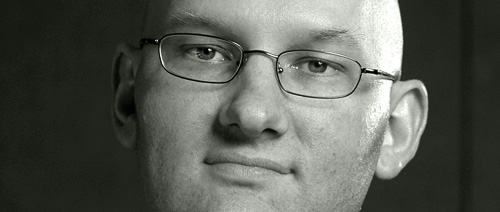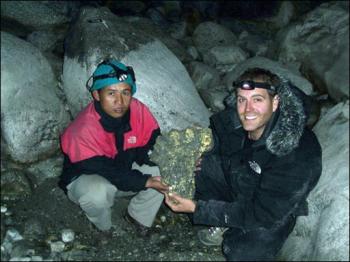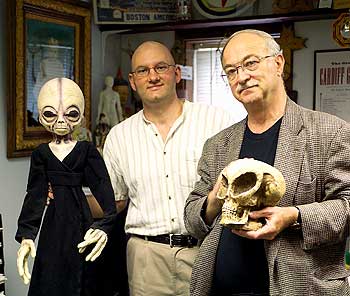
December 5, 2007

Benjamin Radford, who is called LiveScience’s “Bad Science Columnist,” lives up to his title in a new posting about Yeti in which he spreads more bad science.
I understand that newspaper writers are often not to blame for their headlines, but in this case I wonder if Radford dreamed up the headline for his own column? Entitled “The Truth About the Abominable Snowman,” it sounds dangerously close to stating an absolute and true believer stance, if you ask me. That Radford would think he has the “truth” about anything seems a bit much. He has stumbled in this attempt.
The column is about the recent Joshua Gates find of footprints said to be from a Yeti. As opposed to being totally on the opposite side of the aisle here, from Radford, I have had my own questions about the first cast shared by the media, about how intriguingly similar this 2007 cast seemed to be to the 2006 Johor “Bigfoot” cast, and I even questioned whether some stock photos were being used. But I admitted here I was mistaken about the cast being the same. Will Ben Radford someday admit this column of his is over-the-top?
I differ with Radford on various statements in his new column (which you can read completely here). I will concentrate on a few counterpoints.
First, Radford spends two paragraphs spreading the old 1960 “bad science” debunking points that footprints in snow melt into larger prints and that’s the reason we have Yeti tracks. This might be important to discuss if Gates had found his alleged Yeti footprints in snow, I suppose, but Gates did not. Amazingly enough, Radford after going on and on about melting snow, then mentions that the Gates tracks were not found in snow.

As Gates has noted from the beginning, he cast the track on the bank of the Manju River. BTW, Gates says it was in sandy soil, not “rocky soil,” as Radford claims.
Next Radford shows himself to know nothing about the science of tracking animals. Radford writes: “If the soil was soft enough to make a valid impression as Gates claimed, it is puzzling that he found only one complete track. Unless the creature was dropped from a helicopter, scampered a few feet, and then picked up again, there should be a continuous line of dozens of tracks. Or, if the terrain is so poor at capturing tracks that he only found one full print, how accurate can Gates’s track be?”
Radford tries to use ridiculing “helicopter humor” to hide the fact he just doesn’t know what he’s talking about. Animals do not necessarily leave textbook pictures of trailways. They are, after all, animals, and they jump from rocks to rocks, go into the water at a riverbank, and check out the root systems of trees, where prints are not usually left.
Radford does not even know what the bank of this river looks like and he’s saying “dozens of tracks” should have been left. In reality, Gates made and has mostly shown one cast from one of the three footprints found on Wednesday, November 28, 2007. The media releases have focussed on the one complete track cast, as they always do. Actually, if you view the new Fox video uploaded here, you can see a partial print that Gates showed at his Asian press conference of another track.
But back to those melting snow tracks, for a moment: There is one major failing of the old 1960 World Book argument, promoted by Marlin Perkins and Edmund Hillary. In rushing to explain that Yeti tracks are just “melting fox tracks” or “melting wolf tracks,” skeptics in the 1960s ignored what the melting does to stride. Here again, Radford never addresses the fact that melting prints get closer and the stride is reduced. I don’t know a good tracker who is worth his or her salt that can’t tell that snow-melt is responsible when the stride is taken into account. Think about it.
Next, Radford takes the quick route to say: “Those who live in the foothills of the Himalayas are skeptical about Gates’s claim, suggesting that he simply misinterpreted tracks from a mountain bear.”

Ben Radford often uses “straw Yeti” and “straw Bigfoot” in his presentations to knock down better pieces of evidence by pointing to the weaker elements in the file. Above he is shown with a hoaxed image of Bigfoot during one such critical talk.
In Radford’s “Bad Science” column he seems to initially be relying on one quote in the current Gates flap from Ang Tshering Sherpa, the president of Nepal Mountaineering Association, who incorrectly said: “The footprints may be from a Himalayan bear. It is believed that Yetis have only four toes but the footprints recorded by the US team have five toes.” This would be news to hundreds of years of other Sherpas, Nepalese, and Western climbers such as Eric Shipton who have found five-toed Yeti footprints.
Radford then goes on in the next sentences of the same paragraph to support his “bear” argument with a New Zealander (Sir Edmund Hillary) and a German (Reinhold Messner). Messner and Hillary do not live in the foothills of the Himalayas, please note.
The “bear stories” from these two men also do not hold up scientifically. Hillary knowingly had his man Desmond Doig buy a bear fur at a marketplace during the World Book expedition, told the media he wondered if it was from a Yeti, and then later revealed to the scientists and media the fur was from a rare blue bear. Messner’s “Yeti-is-a-bear” theory was promoted to sell his book a few years ago. For those that understand there are many Yetis, Messner and Hillary merely confirmed what Sherpas, Nepalese, Ivan Sanderson, Bernard Heuvelmans, and I have pointed out for decades – the “Dzu-Teh” is an upper montane bear (but the “Meh-Teh” and “Teh-Lma” are not bears). There never has been “one” Yeti. It is more complex than what Radford would have you believe.
Unfortunately, as often occurs in such skeptical assaults against new pieces of evidence in cryptozoology, I find Ben Radford has drifted into an ad hominem (Latin: “argument against the man”) attack aimed at Joshua Gates. Radford writes: “Gates is an actor, not a zoologist or animal tracker, and has little or no experience with supposed Yeti footprints. Gates’s credibility is not helped by his appearances on the ‘Ghost Hunters’ television show.”
Radford makes no sense in this criticism. First of all, Radford is the person that actually wrote me in an email comment that Gates has a degree in archaeology. But here we find Radford questioning Gates’ credibility in his article because Gates is “working” in the entertainment field. If Gates is an actor and television host, won’t we expect him to have on his resume some jobs in this field? That makes as much sense as me asking you to question what degrees does Radford have to write about Yeti, because after all Radford’s been a part-time film critic since 1994. Come on, Ben!

Or does it mean that Radford can’t be a skeptic of cryptids just because he’s been associated with UFO debunkers and pictured with aliens? No, of course, not. Radford needs to reexamine his ad hominem style of critiquing people, which he so frequently seems to fall into doing. What do they say about people that live in glass houses?
I have open questions about the Yeti cast being flown out of Asia as I write this, but I have not been enlightened by reading Ben Radford’s “truth” about the Abominable Snowmen, that’s for sure.
About Loren Coleman
Loren Coleman is one of the world’s leading cryptozoologists, some say “the” leading living cryptozoologist. Certainly, he is acknowledged as the current living American researcher and writer who has most popularized cryptozoology in the late 20th and early 21st centuries.
Starting his fieldwork and investigations in 1960, after traveling and trekking extensively in pursuit of cryptozoological mysteries, Coleman began writing to share his experiences in 1969. An honorary member of Ivan T. Sanderson’s Society for the Investigation of the Unexplained in the 1970s, Coleman has been bestowed with similar honorary memberships of the North Idaho College Cryptozoology Club in 1983, and in subsequent years, that of the British Columbia Scientific Cryptozoology Club, CryptoSafari International, and other international organizations. He was also a Life Member and Benefactor of the International Society of Cryptozoology (now-defunct).
Loren Coleman’s daily blog, as a member of the Cryptomundo Team, served as an ongoing avenue of communication for the ever-growing body of cryptozoo news from 2005 through 2013. He returned as an infrequent contributor beginning Halloween week of 2015.
Coleman is the founder in 2003, and current director of the International Cryptozoology Museum in Portland, Maine.
Filed under Abominable Snowman, Artifacts, Breaking News, Cryptomundo Exclusive, Cryptotourism, CryptoZoo News, Cryptozoologists, Cryptozoology, Evidence, Expedition Reports, Eyewitness Accounts, Footprint Evidence, Forensic Science, Yeti